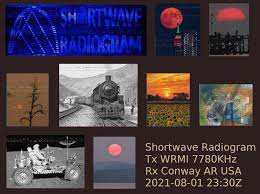Clandestine station, Shiokaze - without jamming, it was changed on the 12th as soon as I wrote that there was no frequency change. Even today, the radio waves from Yamata are extremely strong, there is no interference, and it sounds clear. The 1300 broadcast on Thursday is Korean in both the first half and the second half.
Broadcasting by the Abduction Issue Headquarters in the 1300s, Tashkent, and transmission to Taiwan are all good. The audio files on the website are updated weekly, but the frequency is still B21. We cannot display strange times such as 27:30. The same program is out for a week at this time.
The frequency of the 1405 "Shiokaze" has also been changed. Along with the broadcast of 1705, "Furusato no Kaze" appears at this time.
JSR Shiokaze, May 12 ~
1300-1400 5935, 6070
1405-1435 6090, 7325
1600-1700 5920,
6165 1705-1800 5980, 7435
The 1430's "Furusato no Kaze" is powerful at 11955, 9705, and 9685kHz. It started with the nostalgic Japanese song "soap bubbles". The explanation of the abduction issue is about Megumi Yokota. Mr. Yokota, who lived in Niigata Prefecture at that time, was abducted by North Korea on the evening of November 15, 1977 when he left school for badminton, a junior high school club activity in Niigata City. She was 13 at the time. It became publicly known in the press that she was abducted 20 years later. The abduction of junior high school girls has attracted attention as a symbol of North Korea's brutal and abduction cases. North Korea has been abducted, but her ex-husband submitted a fake remains in 2004, saying that she had already died, and her death date was changed from March 1993 to April 1994, and there is no credibility at all. In order to camouflage the relationship with the top, it is inconvenient for North Korea unless it is killed.
"Furusato no Koe" is a message to Megumi Yokota, who passed away on June 5, 2020, and was held in April 2017 in Tokyo by her father, Shigeru Yokota. It is a difficult-to-hear message that makes you feel the age from the recording at "Save the Victims! National Grand Rally". Then, the message recorded in February 2015, at this time, the energy itself can be clearly heard. She also states that she met her grandson in Mongolia. And from her mother, Sakie Yokota, a new message from the Niigata Prefectural Assembly in December 2021 has been released. Next, her younger brother, Takuya Yokota, who was four years younger than her, became the representative of her family association from the recording at the international symposium hosted by the Government of Japan in December 2021. Also states. Similarly, Mr. Tetsuya Yokota sent a recording message at the Niigata Prefectural Assembly in November 20210.
"Today's Song" is the song "Furusato" sung by all the participants from the government-sponsored International Symposium Part 3 Mini Concert on December 14, 2019. This program has the same content as April 11th and 18th, 2022.
The 1600 "Shiokaze" came out at 5920 and 6165kHz. Yamata's radio waves were strong during this time as well, completely crushing the 5920kHz VOF. CRI interference at 6165kHz has no effect.
The 1705 came out at 5980 and 7435kHz. At 7435kHz, faxes below 1kHz are strong, and interference is intense depending on the receiver. If you cut the lower side, it sounds clear.
(Radio From Broadcasting Overseas)




.JPG)












.jpg)



.jpg)